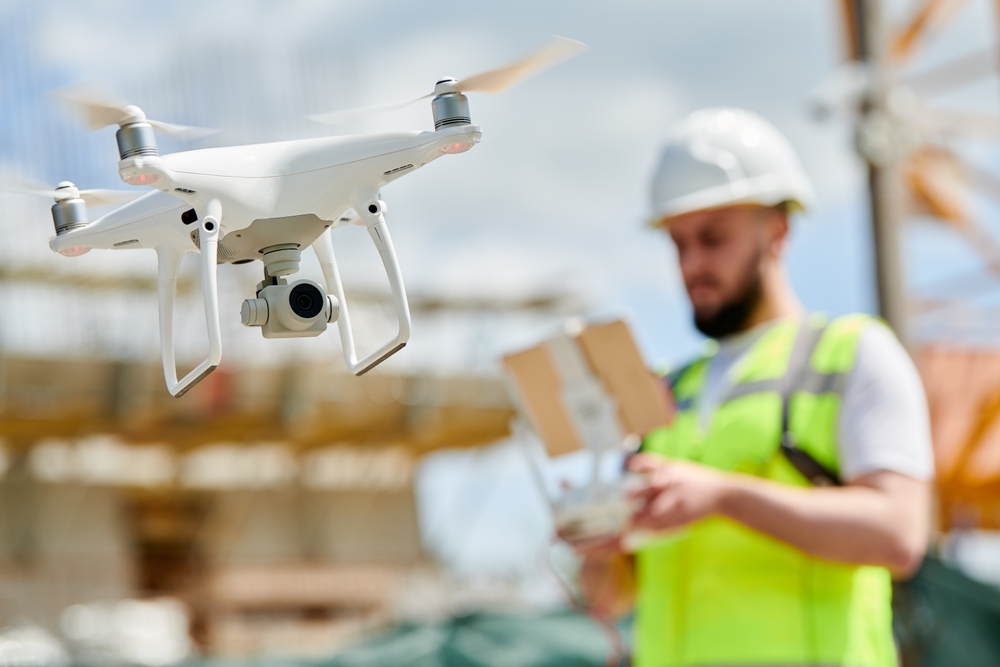From Ground to Air: Overcoming Drone Testing Challenges
- Balaji Ponnada, Associate Vice President
- Aug 21, 2023
- 9 min


The use of drones in recent years is paving the way fast for the future of autonomous aircraft. Autonomous aircraft, or drones, are becoming increasingly popular due to their ability to fly without the need for a pilot on board. These unmanned aerial vehicles (UAVs) can be used for a variety of tasks in many different industries.
With the increasing complexity and criticality of drone applications, thorough testing and validation is vital to ensure their reliability, safety, and effectiveness. But just how important is the use of drones, and how can they help improve some of the key challenges faced through their use?

The drone ecosystem refers to the complex network of technology, regulations, industries, and applications that have emerged around unmanned aerial vehicles (UAVs) or drones. Over the years, drones have evolved from being primarily used in military and defense applications to finding diverse applications in various other sectors such as construction and utilities. This ecosystem comprises several key components, each playing a crucial role in shaping the future of drone technology.
Some of the key things that the drone ecosystem does is through CGI, unique and other manufacturers of drones. Various pieces of software are used for ground control that can conduct image analysis. This software can capture images and videos and send them to ground control There are different types of ground control software providers that must be compatible with individual drones.
Take the construction industry for example. Drones must be able to fly NLOS (non-line of sight), and be capable of conducting surveys or inspections. Drones are often able to get the dimensions of a piece of land so construction companies can plan for how much is needed in terms of materials for what they are aiming to build. It is possible to build a 3D model from drone footage to fully map out how a new building will look, and measure for a building plan. It can also survey the terrain to be built on and even the soil type.
In farming, the use of drones has been seen in planting seeds and fertilization of crops, which can often help farmers break even on their costs. Wind turbines can be inspected with drones so that previous images can be compared with current ones to look for any degeneration or problems on the turbines that need to be fixed.
Image analysis is very important and there are several types of software available that can help with this such as PIX4 and Scopito that can build 3D models. The digital surface model and the digital terrain model can be put into custom folders so that images can be analysed and inspected with Scopito and compared with previous images. This is particularly useful for wind turbine inspections, and construction surveys.
Drone testing plays a significant role in many industries. For example, in the defense and aerospace industry the US military is exploring the use of drones or autonomous aircrafts for various applications, as these drones can carry out reconnaissance missions and gathering intelligence in dangerous locations without the need for humans to intervene. The US Department of Defense is also looking at the use of autonomous drones for offensive operations such as military strikes on enemy targets. This would get rid of the need for a human pilot, which would make military missions much more efficient and safer to conduct.
In addition, the development of autonomous aircraft technology is also paving the way for the use of drones in civilian and commercial applications Autonomous drones are often used for a variety of tasks such as the delivery of medical supplies and packages, law enforcement and search and rescue. The use of autonomous aircraft technology in such settings makes it possible for drones to be used in a variety of scenarios while preserving human life.
When it comes to the use of autonomous aircrafts, this is a pivotal development in the aviation industry as these drones are paving the way for a future where aircraft can be used for a variety of tasks also without the need for a human pilot. New and innovative ways to conduct operations with the use of drones is paving the way for civilian applications. However, it is vital that the use of any drones is properly tested, and this is where drone testing and drone software testing comes in.
There are several different types of drone testing that can be conducted to ensure greater safety and reliability when using drones. These include:
Drone testing presents unique challenges due to the complex nature of these systems. Some common challenges include:
Drone testing is an indispensable asset to many industries, ensuring the reliable and safe operation of unmanned aerial vehicles. Thorough testing validates their performance, functionality, and compliance with regulatory standards. Overcoming testing challenges and leveraging emerging technologies will drive the advancement of drone capabilities and their seamless integration into different industry operations.
As the industry progresses, continued investment in comprehensive and innovative drone testing and drone software testing methodologies will be crucial for achieving mission success and enhancing overall security and efficiency.
Some of the most significant ways that drone testing continues to be of paramount importance includes:

As different industries continue to embrace the potential of drones, testing methodologies and technologies will evolve accordingly. Advancements in artificial intelligence (AI) and machine learning (ML) will enhance autonomous drone testing capabilities. Simulations and virtual environments will also play a more prominent role, allowing for comprehensive testing without the constraints of real-world scenarios.
Additionally, collaborative efforts between industry stakeholders, regulatory bodies, and testing organizations will drive the establishment of standardized testing frameworks and best practices.
